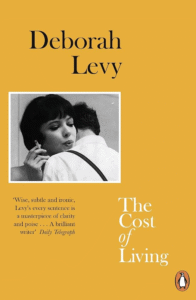The Tangled Threads of Motherhood and Madness: Exploring Sally Hepworth’s “Darling Girls”

A Foundation of Unease
Sally Hepworth’s “Darling Girls” isn’t a simple thriller; it’s a nuanced exploration of motherhood, trauma, and the enduring power of sisterhood, even when twisted by shared pain. The narrative unfolds across two timelines, weaving together the idyllic childhood of three adopted sisters, Jessica, Norah, and Alicia, with their present-day adult lives, marked by the lingering shadow of a deeply disturbing past. Hepworth masterfully crafts a sense of unease from the very beginning, hinting at a darkness that lurks beneath the surface of their seemingly perfect family life.
The Fractured Façade of Family
The story centers around Jessica, the youngest, whose seemingly idyllic childhood memories are juxtaposed against the chilling reality of her adoptive mother, Eve. As the narrative progresses, Hepworth skillfully peels back the layers of Eve’s persona, revealing a woman battling severe mental illness, whose love for her daughters is inextricably linked to a profound and ultimately destructive need for control. The idyllic veneer of picnics and birthday parties gradually cracks, revealing a home where fear and manipulation reign.
The Complexity of Maternal Love
The strength of “Darling Girls” lies in its complex portrayal of the mother-daughter dynamic. Eve’s actions, while often monstrous, are not presented as simply evil. Hepworth subtly explores the roots of Eve’s mental instability, hinting at her own troubled past and the societal pressures that amplify her anxieties. This nuanced portrayal forces the reader to confront the uncomfortable truth that love and abuse can coexist, entangled in a web of psychological complexity.
The Enduring Power of Sisterhood
The bond between the three sisters forms the emotional core of the novel. Their shared trauma forges a connection that transcends blood ties. Each sister copes with the past in her own way. Jessica, the narrator, seeks solace in her memories, clinging to the good moments while slowly acknowledging the bad. Norah, the eldest, embodies a fierce protectiveness, becoming the de facto mother figure in their fractured family. Alicia, the middle child, struggles with the most profound damage, her life spiraling into self-destructive patterns.
Weaving Together Past and Present
Hepworth’s use of alternating timelines is crucial to the novel’s impact. The reader is gradually drawn into the sisters’ childhood, experiencing their joys and fears alongside them. This immersive approach allows for a deeper understanding of how their early experiences shape their adult lives. The present-day timeline, where the sisters are forced to confront their past, adds a layer of suspense and drives the narrative forward. The tension builds as long-buried secrets begin to surface, threatening to shatter the fragile equilibrium they have managed to create.
A Story of Resilience and Connection
“Darling Girls” is more than just a suspenseful read; it’s a story about resilience, the complex tapestry of family relationships, and the enduring power of sisterhood. Hepworth skillfully navigates the delicate terrain of trauma, crafting a narrative that is both disturbing and deeply moving. While the novel delves into the darkest corners of human experience, it ultimately offers a glimmer of hope, suggesting that even from the most broken beginnings, healing and connection are possible. The book stays with you long after you finish it, prompting reflection on the multifaceted nature of motherhood and the lasting impact of childhood experiences.




















